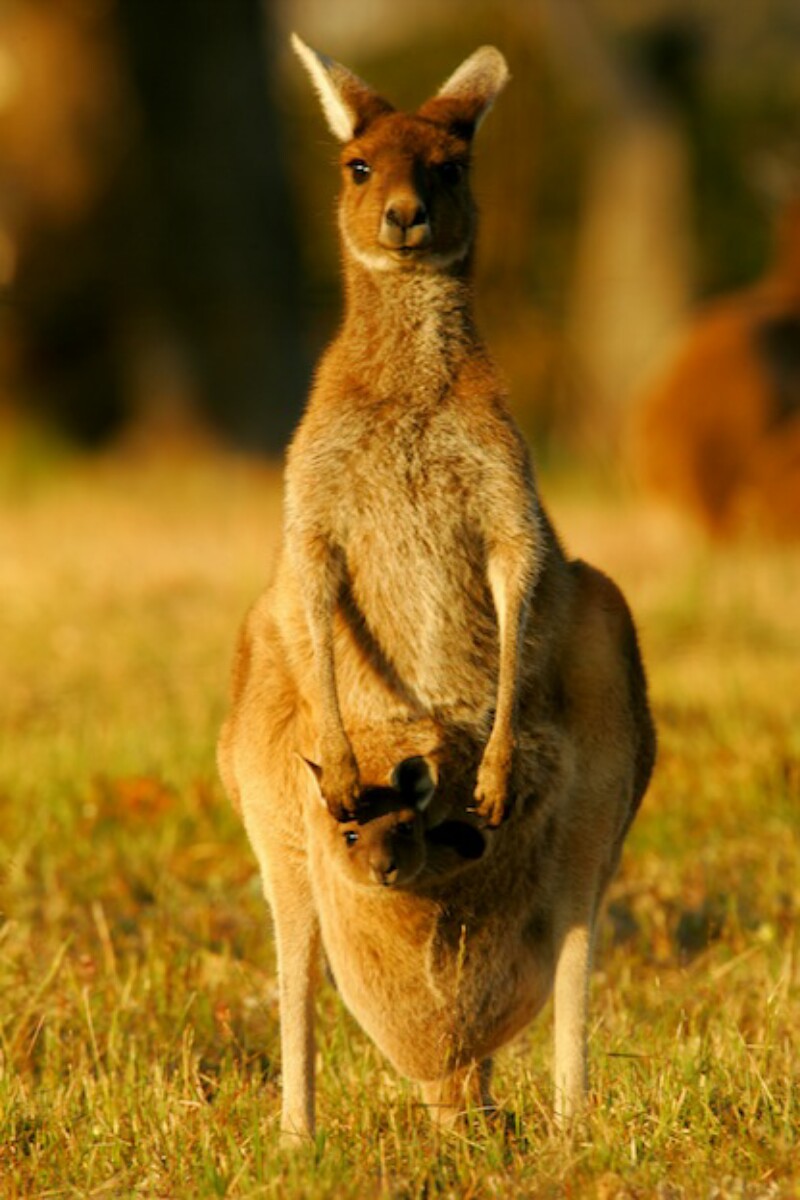Kangaroos are one of Australia's most iconic animals, captivating the hearts of many with their unique characteristics and behaviors. These marsupials are not just a symbol of Australia; they represent a rich cultural heritage and an intriguing ecological role within their habitat. With their powerful hind legs and distinctive hopping motion, kangaroos have adapted to thrive in various environments, making them a subject of fascination for wildlife enthusiasts and researchers alike.
Belonging to the family Macropodidae, which means "big foot," kangaroos are known for their strong legs and large feet that allow them to cover vast distances in search of food and water. They are herbivorous creatures, primarily feeding on grasses and leaves found in their natural habitat. As social animals, kangaroos often travel in groups called mobs, which provides them protection from predators and fosters a sense of community among individuals.
As we delve deeper into the world of kangaroos, we will explore various aspects of their lives, including their behavior, habitat, and the conservation efforts in place to protect them. Join us on this journey to understand more about these remarkable creatures and the vital role they play in maintaining ecological balance.
What Are the Different Species of Kangaroos?
There are four main species of kangaroos that inhabit Australia, each with unique traits and adaptations:
- Red Kangaroo: The largest of all kangaroo species, known for its reddish-brown fur.
- Eastern Grey Kangaroo: Commonly found along the eastern coast, recognized for its greyish fur.
- Western Grey Kangaroo: Similar to the Eastern Grey but with a slightly different habitat preference.
- Antilopine Kangaroo: Found in northern Australia, this species has a more slender build and distinct coloration.
How Do Kangaroos Adapt to Their Environment?
Kangaroos have developed several fascinating adaptations that help them survive in the wild:
- Efficient locomotion: Their powerful hind legs allow them to travel long distances quickly while conserving energy.
- Unique reproductive system: Female kangaroos have a pouch where they carry and nurture their young.
- Social structure: Living in mobs provides safety in numbers and facilitates social interactions.
- Dietary adaptations: Their specialized digestive system allows them to extract maximum nutrients from tough vegetation.
What is the Behavior of Kangaroos in the Wild?
Kangaroo behavior is characterized by their social interactions and feeding patterns:
- Grazing habits: Kangaroos are primarily crepuscular, feeding at dawn and dusk when it is cooler.
- Social grooming: They engage in grooming behaviors, which help strengthen social bonds within the mob.
- Communication: Kangaroos use a variety of vocalizations and body language to communicate with one another.
What is the Role of Kangaroos in the Ecosystem?
Kangaroos play a significant role in maintaining ecological balance:
- Seed dispersal: As herbivores, they help in the dispersal of seeds through their droppings, promoting vegetation growth.
- Grazing impact: Their grazing habits can influence plant communities, helping prevent overgrowth of certain species.
- Prey for predators: Kangaroos serve as a food source for various predators, thus contributing to the food chain.
How Are Kangaroos Being Protected?
Conservation efforts are essential for the protection of kangaroo populations:
- Protected areas: Establishing national parks and reserves helps safeguard their natural habitats.
- Awareness campaigns: Educating the public about the importance of kangaroos and their role in the ecosystem is vital.
- Research initiatives: Ongoing studies help monitor kangaroo populations and their health, informing conservation strategies.
What Challenges Do Kangaroos Face Today?
Kangaroos encounter numerous challenges in their natural environment:
- Habitat loss: Urbanization and agriculture have led to significant habitat destruction.
- Climate change: Altered weather patterns affect their food sources and water availability.
- Human-wildlife conflict: As their habitats shrink, interactions with humans can lead to negative consequences for both parties.
Conclusion: The Importance of Kangaroo Conservation
In conclusion, kangaroos are not only a symbol of Australia but also a crucial part of the ecosystem. Their unique adaptations, social structures, and ecological roles make them fascinating subjects of study. However, the challenges they face today highlight the urgent need for conservation efforts to protect these remarkable creatures and their habitats. By understanding and supporting kangaroo conservation, we can ensure that future generations will continue to appreciate and learn from these iconic marsupials.



